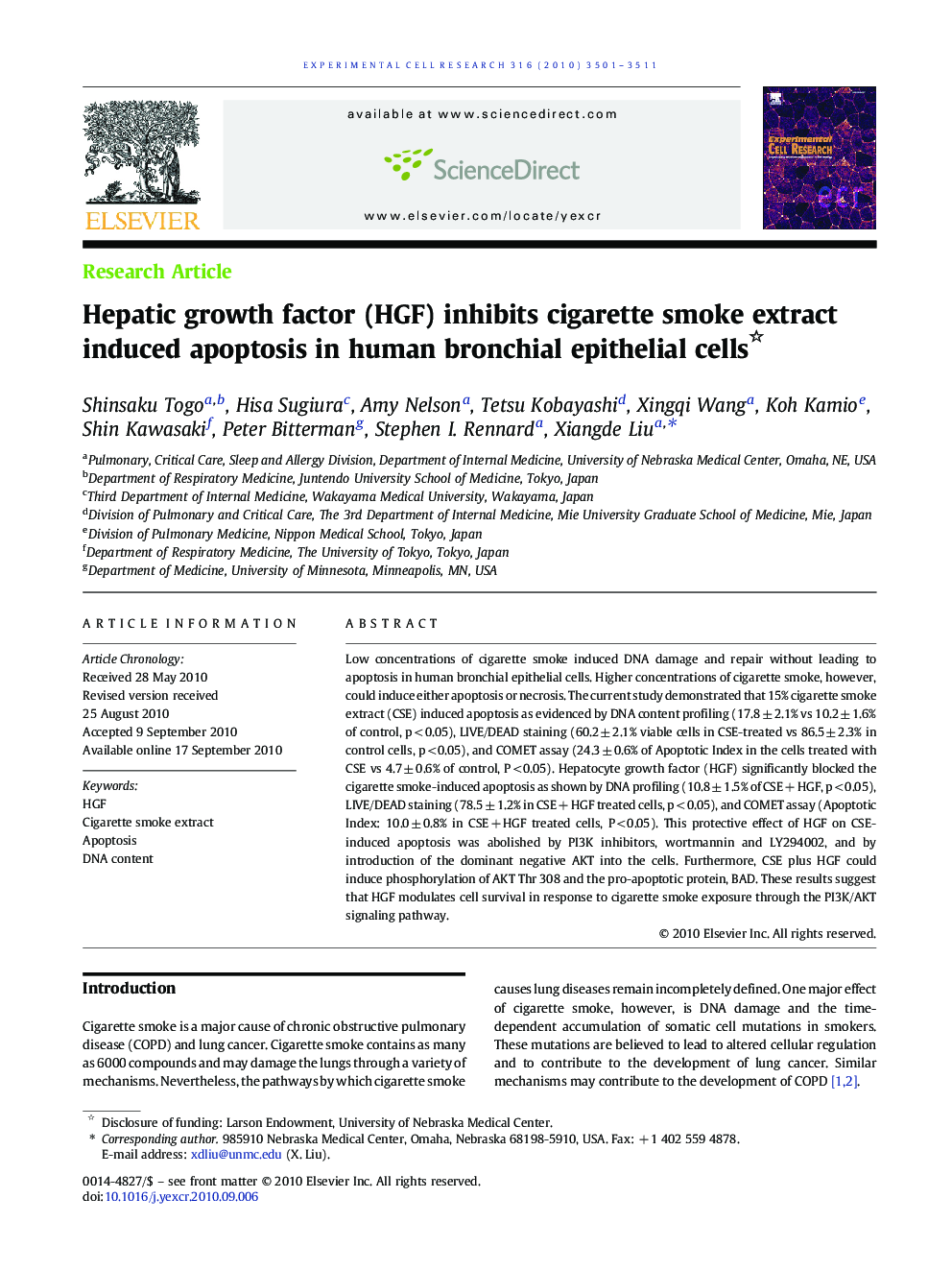| Article ID | Journal | Published Year | Pages | File Type |
|---|---|---|---|---|
| 2131381 | Experimental Cell Research | 2010 | 11 Pages |
Low concentrations of cigarette smoke induced DNA damage and repair without leading to apoptosis in human bronchial epithelial cells. Higher concentrations of cigarette smoke, however, could induce either apoptosis or necrosis. The current study demonstrated that 15% cigarette smoke extract (CSE) induced apoptosis as evidenced by DNA content profiling (17.8 ± 2.1% vs 10.2 ± 1.6% of control, p < 0.05), LIVE/DEAD staining (60.2 ± 2.1% viable cells in CSE-treated vs 86.5 ± 2.3% in control cells, p < 0.05), and COMET assay (24.3 ± 0.6% of Apoptotic Index in the cells treated with CSE vs 4.7 ± 0.6% of control, P < 0.05). Hepatocyte growth factor (HGF) significantly blocked the cigarette smoke-induced apoptosis as shown by DNA profiling (10.8 ± 1.5% of CSE + HGF, p < 0.05), LIVE/DEAD staining (78.5 ± 1.2% in CSE + HGF treated cells, p < 0.05), and COMET assay (Apoptotic Index: 10.0 ± 0.8% in CSE + HGF treated cells, P < 0.05). This protective effect of HGF on CSE-induced apoptosis was abolished by PI3K inhibitors, wortmannin and LY294002, and by introduction of the dominant negative AKT into the cells. Furthermore, CSE plus HGF could induce phosphorylation of AKT Thr 308 and the pro-apoptotic protein, BAD. These results suggest that HGF modula
